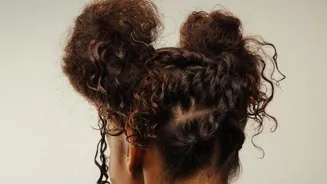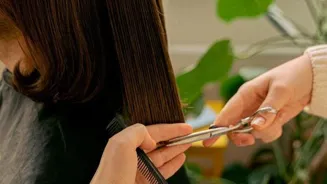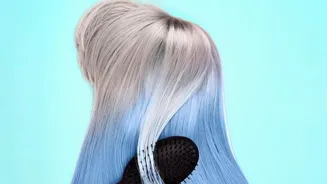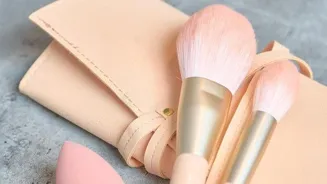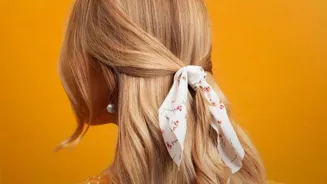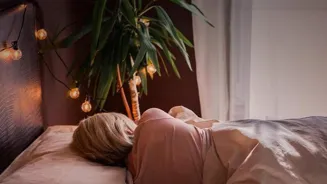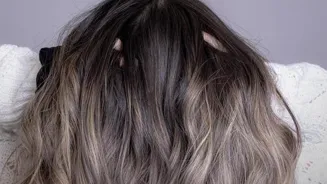Discover the art of hair braiding: From traditional styles to modern techniques. Learn more about this ancient craft!
In the diverse tapestry of Indian culture, hairstyles hold a special significance. From
elaborate wedding braids adorned with flowers to simple everyday plaits, hair braiding is an art form passed down through generations.
For those looking to learn this beautiful craft, a plethora of tutorials are available, making it easier than ever for beginners to embark on their braiding journey. Let's dive into the world of hair braiding and explore some basic techniques to get you started.
Braiding benefits hair health, promotes growth, and prevents damage
Braiding is not just about aesthetics; it's also about hair care. Braids can protect your hair from damage caused by environmental factors and reduce breakage by keeping strands contained.
Simple braids can be a great way to manage long tresses and prevent tangling, especially during hot and humid weather. Furthermore, braiding can also promote hair growth by reducing manipulation and allowing the scalp to retain moisture.
It’s a win-win situation: beautiful hair and healthy hair go hand in hand! It requires patience, practice, and the right resources. Whether you're aiming for a simple three-strand braid or something more intricate, there's a tutorial out there to guide you.
With consistent effort, anyone can master the art of hair braiding and enjoy its numerous benefits.
Prep hair, gather supplies, section properly for successful braiding
The first step to successful braiding is preparation. Start with clean, detangled hair. Use a wide-tooth comb to gently remove any knots or tangles, working from the ends towards the roots. Applying a leave-in conditioner or serum can help to add slip and make the hair more manageable.
Gather your supplies: a comb, hair ties, and any styling products you wish to use. A good quality comb is essential for neat partings and smooth braiding. Hair ties should be gentle and snag-free to avoid causing damage to your hair.
Depending on your hair type and desired style, you may also want to have hairspray, gel, or mousse on hand. Sectioning the hair properly is also crucial for achieving a clean and polished look. Use clips to keep the sections separate and prevent them from getting mixed up.
If you’re braiding your own hair, using two mirrors can be helpful to see the back of your head.
Master the three-strand braid for perfect hair styling
The three-strand braid is the most basic and fundamental braiding technique. To begin, divide the hair into three equal sections. Hold the left section in your left hand and the right section in your right hand. Cross the right section over the middle section.

Then, cross the left section over what is now the middle section. Continue this process, alternating between the left and right sections, until you reach the end of the hair. Secure the braid with a hair tie.
Practice makes perfect, so don't be discouraged if your first few attempts aren't flawless. Focus on maintaining even tension and keeping the sections neat. Once you've mastered the three-strand braid, you can experiment with variations such as the Dutch braid and the French braid.
These involve adding hair to each section as you braid, creating a more intricate and voluminous look.
Learn advanced braiding: French braid, Dutch braid, fishtail braid
Once you have mastered the basic three-strand braid, you can progress to more complex braiding techniques such as the French braid. For a French braid, begin by taking a section of hair at the crown of your head. Divide this section into three equal strands.
Start braiding as you would a regular three-strand braid, but with each pass, add a small section of hair from the sides into the strand that you are crossing over. This will gradually incorporate more hair into the braid, creating a beautiful and intricate design.
The Dutch braid is similar to the French braid, but instead of crossing the strands over the middle section, you cross them under the middle section. This creates a raised effect that gives the braid a more three-dimensional appearance.
The fishtail braid is another popular style that involves dividing the hair into two sections instead of three.
Learn to create a chic fishtail braid for a unique style
The fishtail braid offers a unique and stylish alternative to traditional braids. Split hair into two equal sections. Take a small strand from the outer edge of the left section and cross it over to the right section.
Repeat on the other side, taking a small strand from the outer edge of the right section and crossing it over to the left section. Continue this process, alternating sides, until you reach the end of the hair. Secure the braid with a hair tie.
The fishtail braid may seem intimidating at first, but with a little practice, it becomes quite easy to master. Start with a tight braid and gradually loosen it for a more relaxed and bohemian look. Consider adding beads or other embellishments to personalize your braids and create a unique style.
There are countless possibilities for creativity and self-expression through hair braiding.
AI Generated Content. Glance/InMobi shall have no liability for the content